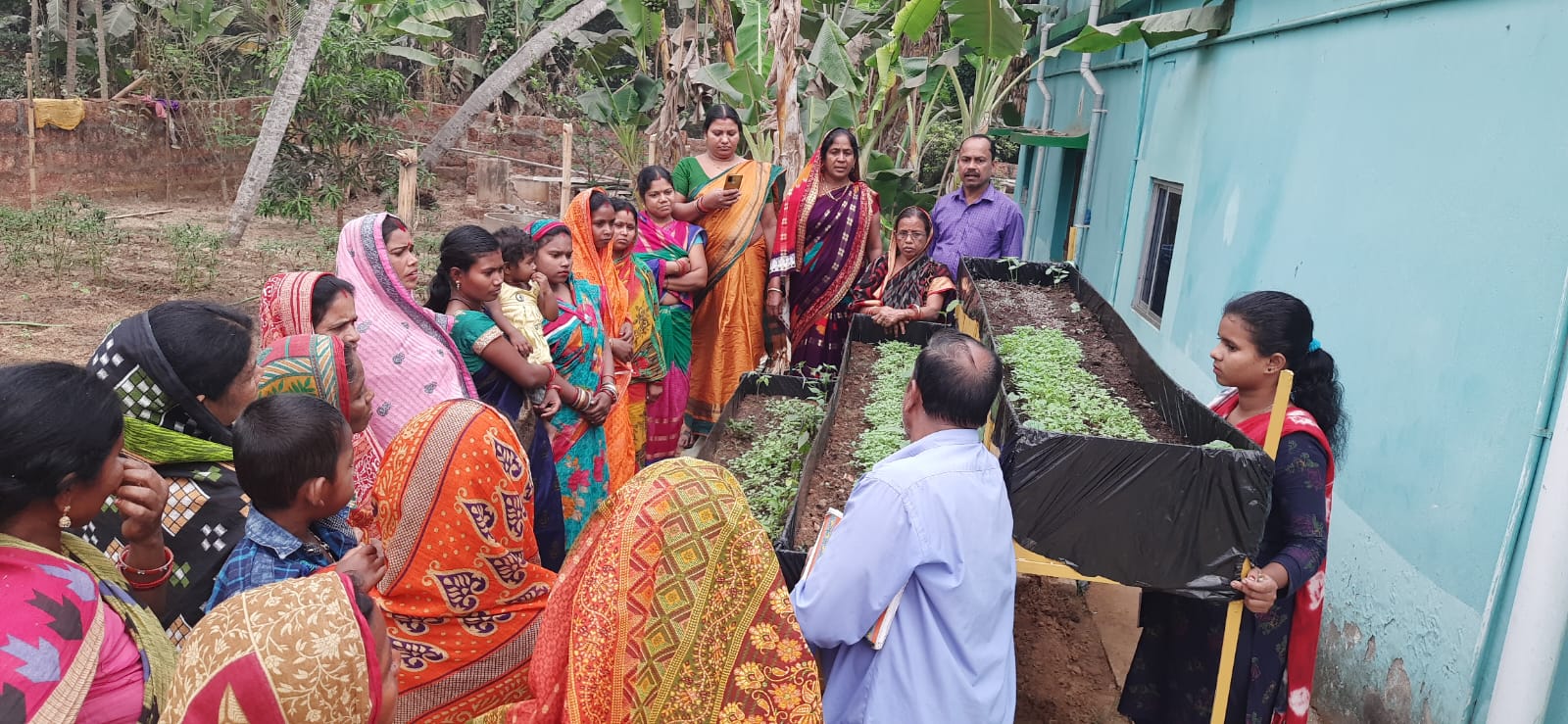
India is recognized as the second-largest producer of several food crops, among them rice, wheat, and vegetables, according to the Food and Agriculture Organization of the United Nations. Yet a not-insignificant portion of its population suffers from malnutrition. Women and children are disproportionately impacted.
A new low-cost farming system now has the potential to both address nutritional needs and provide additional income for female farmers in India. Created by the Indian Council of Agricultural Research, the integrated vertical nutri-farming system features a triangular iron structure that allows for vegetable growing, mushroom farming, and poultry keeping.
The farming system is said to be ideal for the Indian climate: Because the vegetables are not planted in the ground, crops remain unharmed by standing water in cyclone or flood-prone locations. Similarly, the system reportedly requires less water for cultivation than traditionally planted crops—making it adaptable for water-scarce regions as well.
Enough to feed 8-person household
More importantly, the model—which requires only 12.72 m2 of space—delivers outsized yields for its diminutive frame. The year-round farming system is said to be able to produce:
- 500 kg of three types of vegetables (leafy, root, and tubers)
- 50 kg of two mushroom varieties (paddy straw and oyster)
- 2,000 eggs from the chickens
- 35 kg of meat from male and culled birds
According to Dr. Arun Kumar Das, technical advisor for the Promotion & Stabilization of Farmer Producer Organizations (PSFPO) project, which Tanager implements in the state of Odisha, the system can easily feed an eight-person household. “With diversified crop production and the use of organic fertilizers, the integrated vertical nutri-farming system not only protects soil quality but also supplies enough protein, vitamins, carbohydrates, fiber, and other nutrients to sustain women’s nutritional levels,” Dr. Das says.
Any surplus food can be sold for additional income. Dr. Das estimates sales of extra produce, eggs, and meat could generate INR 50000 (US$605) per year for farmers. (In 2019, the monthly income for agricultural households in Odisha averaged INR 5112, or approximately US$62, according to a survey conducted by India’s National Statistical Office in its Ministry of Statistics and Programme Implementation.)
Seedlings from the farming system could allow small and marginal farmers to operate a low-cost nursery business generating roughly INR 20000 (US$242) per year. Even the wasted produced by the chickens being raised in the structure can be recycled to make organic compost and sold on the market, Dr. Das says.
Potential to implement throughout India
Tanager recently acquired a technology license from the Central Institute for Women in Agriculture (ICAR-CIWA), a wing of the Indian Council of Agricultural Research. With the legal authority to construct the model, Tanager can now partner with interested parties to implement the system throughout India.
For now, it is modeling the standalone structures with two of the PSFPO lighthouse Farmer Producer Organizations (FPOs) to educate farmers on the system’s potential. With the PSFPO project aiming to increase the profitability and sustainability of farmer collectives in a gender-inclusive manner, the vertical farming system is an ideal fit for FPOs and farmers looking to undertake more income-generating activities.
And though it’s early days still for the integrated vertical nutri-farming system, the idea is already stirring interest among farmers.
“If we can get this structure for our Self-Help Group,” says Lata Dei, a female farmer from Aitalanga Village in Khordha District, “then we can grow pointed gourd and spine gourd seedlings on it, and farmers can directly purchase from us. This structure can contribute to our group’s additional income generation.”

